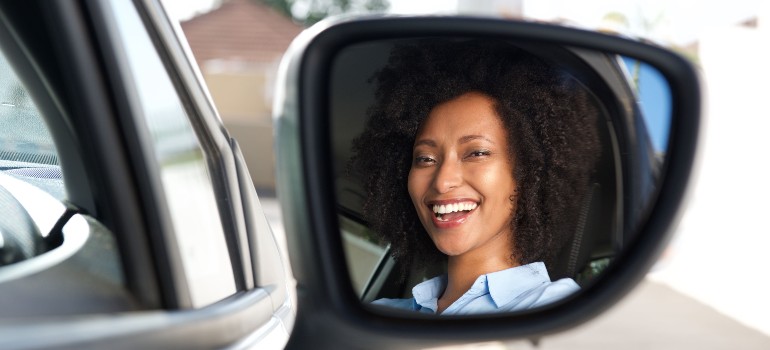Ever wondered what you're most likely to fail your driving test on? In April last year, the DVSA published their top 10 reasons learners fail their tests¹!
If you're going to be waiting a long time for your driving test due to the covid-19 backlogs, reading these reasons and our top tips to avoid these faults could help you avoid a long wait for another test. To keep you on your toes until then, make sure you are getting some private practice in and of course, that you are covered with learner driver insurance. Between April 2019 and March 2020, the average pass rate in the UK was 45.9%. Most of those who unfortunately failed their test because of at least one of the reasons below.
1. Not making effective observations at junctions
Faults here come under ‘Junction Observations’.
Common faults are:
- Failing to judge the speed of an approaching vehicle
- Entering a roundabout with a vehicle approaching from the right
- Making no effective observations at all
- Making no observations when joining a dual carriageway from a slip road
- Going straight ahead at a crossroads
- Looking too late
- Repeatedly not looking left when turning left
Our top tips:
- Slow and steady wins the race. Although it’s important not to go too slow, the driving test isn’t a race and it is important to take time to make observations and approach the junction at a suitable speed.
- Err on the side of caution. Although the candidate can get a minor fault for hesitation, that is better than getting a major fault for putting the car in a dangerous situation.
- MSM: Mirror signal manouver. This is the golden rule before making any manoeuvre and will help to ensure the learner driver makes effective observations.

2. Not using mirrors correctly when changing direction
Faults here come under ‘Mirrors - Change direction’.
Common faults are:
- Not using mirrors when exiting a roundabout
- Causing a vehicle to slow when changing lanes on a dual carriageway
- Trying to change lane on a roundabout when a vehicle is directly alongside
- Exiting a roundabout
Our top tips:
- Making sufficient observations is one of the key areas learner drivers need to be constantly mindful of, so always remember to use mirrors before any manoeuvre.
- Once again, MSM: Mirror, Signal, Manoeuvre needs to be at the top of mind for the candidate.
3. Not having proper control of steering
Faults here come under ‘Control - Steering’.
Common faults are:
- Repeatedly not steering enough or steering late on the approach to junctions when turning left
- Not steering enough when going around a bend
- Steering late when turning right into a minor road
- Repeatedly mounting the pavement when pulling up on the left
- Steering late when moving out to pass parked vehicles
Our top tips:
- Where possible, keep two hands on the steering wheel at the 10 o’clock and 2 o’clock position.
- Don’t cross your arms when turning the wheel. This is the easiest way to keep smooth turning.
- Be mindful of the distance from the curb or your lane. This way you make sure that you turn the right amount.
4. Incorrect positioning when turning right at junctions
Faults here come under ‘Junctions - Turning right’.
Common faults are:
- Positioning in the left-hand lane when turning right at a roundabout
- Obstructing traffic when you wait to turn right
- When you want to turn right at the end of the road, you incorrectly position to the left
Our top tips:
- When at a roundabout, candidates can use road signs, as well as signs on the floor to help them get the correct lane.
- On a road with a wide junction, be mindful of leaving space for drivers who might be wanting to turn left.

5. Not moving off safely
Faults here come under ‘Moving off - Safety’.
Common faults are:
- Moving off from behind a parked vehicle into the path of an approaching vehicle
- Repeatedly moving off from the side of the road with no blind spot checks
- Pulling off from the right-hand side of the road, causing an oncoming vehicle to slow or stop
- Not making any rear observations when moving off following an emergency stop
Our top tips:
- Remember that, as with any manoeuvre, you need to ensure it is safe to manoeuvre before you start. Candidates need to check their mirrors and blind spots before moving.
6. Not responding appropriately to traffic lights
Faults here come under ‘Response to signs - Traffic lights'.
Common faults are:
- Failing to react to red traffic light
- Stopping after the first white line when there are advanced stop lines for cyclists
- Not progressing when you’re waiting to turn right at a junction and it’s safe to proceed
- Not going ahead when a green light is showing and the junction ahead is clear
- Going ahead when a green light is showing but the junction is not clear
Our top tips:
- When coming to a stop, candidates need to ensure they are not obstructing marked crossings or areas for cyclists.
- It is just as important to move when it is safe as it is to stop when it is not. Hesitation and not moving when it is safe can also cause faults.
7. Poor positioning on the road during normal driving
Faults here come under ‘Positioning - Normal driving’.
Common faults are:
- Repeatedly driving too close to the kerb or centre of the road
- Unnecessarily driving in the right-hand lane of a dual carriageway
- Cutting across the normal road position when you go ahead at a roundabout with no lane markings
Our top tips:
- On marked roads, candidates should use markings to help stay in the centre of their lane. On an unmarked road, candidates should be mindful of their distance to the edge of the road, and use this as a guide to remain in the correct position.
- When on a road with multiple lanes, don’t change lanes if it is not necessary. If you do move lanes to overtake, do not stay in the right-hand lane for longer than it is necessary.

8. Not responding correctly to traffic signs
Faults here come under ‘Response to signals - Traffic signs’.
Common faults are:
- Going to the wrong side of a ‘keep left’ sign
- Ignoring a ‘stop’ or ‘no entry’ sign
- Driving in a bus lane
- Choosing the wrong lane at a roundabout with clear signage
- Acting late or not at all to speed limit changes
Our top tips:
- Candidates should constantly be on the lookout for road signs. It is important to work hard at remembering what these signs mean to help react to them quickly and safely.
- It is important that when candidates do identify a sign, they react in plenty of time and a safe manner. This can mean not reacting straight away if it means putting the car in an unsafe position.
9. Not having control of the car when moving off
Faults here will come under ‘Move off - Control’.
Common faults are:
- Stalling and rolling back when trying to move off
- Repeatedly stalling when moving off
- Stalling repeatedly when moving off on one occasion
- Trying to move off without selecting a gear and then rolling back
Our top tips:
- Learners should practise a move off routine so that every time they do have to move off, all the checks are second nature.
- Candidates should try to remain calm if they stall as this will not necessarily result in a fault. Simply restart your procedure and make sure it is safe before moving off again.
10. Not keeping control of the vehicle during reverse parking
Faults here will come under ‘Reverse park - Control'.
Common faults are:
- Wheels ending up on the pavement at the end of a parallel park
- Too many attempts to reposition when parking
- Losing control of the car when parking in a bay
- Ending up parking outside of the bay
Our top tips:
- As with anything in life, practice makes perfect.
- This isn’t a race. Candidates should take the time to get themselves properly aligned. It is better to take a bit more time and do it right the first time. If it is rushed, it can still take just as long to reposition the car.
One of the main takeaways from this list is that a lot of the areas that are causing learners to fail their driving tests stem from small and easily rectifiable mistakes. Help getting into a routine of making regular observations and checks by taking private practice in between lessons – our learner insurance enables you to get insured on a parent’s or friend’s car and get unlimited driving practice with no risk to the car owner's No Claims Discount.
You can also check out our top tips for passing your driving test and our driving test checklist to help learners get set for their test.







